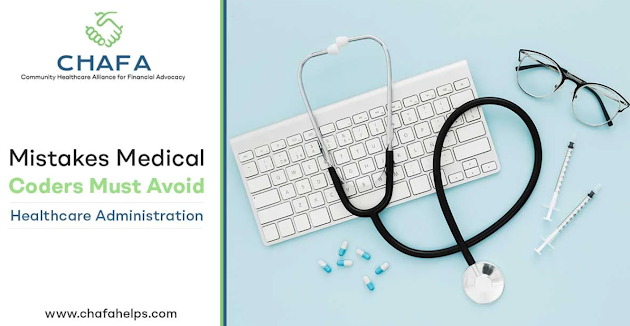Navigating the Maze: Common Medical Coding Mistakes and How to Avoid Them
Introduction:
Medical coding is the backbone of healthcare revenue cycle management. Accurate coding ensures proper reimbursement, compliance with regulations, and clarity in patient records. However, navigating the complexities of medical coding can be akin to maneuvering through a labyrinth, fraught with potential pitfalls. In this blog, we'll shine a light on some common medical coding mistakes and offer guidance on how to steer clear of them.
Incorrect Code Selection: One of the most prevalent errors in medical coding is selecting the wrong code. This can happen due to various reasons, including misunderstanding documentation, insufficient knowledge of code sets, or simply overlooking pertinent details. To mitigate this risk, coders should undergo regular training, stay updated on coding guidelines, and utilize encoding software with built-in error checks.
Upcoding or Downcoding: Upcoding involves assigning a higher-level code than warranted by the services rendered, leading to inflated reimbursement and potential legal repercussions. Conversely, downcoding occurs when a lower-level code is assigned, resulting in underpayment and possibly compromising patient care. Both practices are unethical and can invite audits. Coders must adhere strictly to documentation guidelines and code within the appropriate level of service provided.
Failure to Document Medical Necessity: Medical necessity is a crucial criterion for reimbursement by payers. Failure to adequately document the medical necessity of a procedure or service can result in claim denials or audits. It's essential for coders to ensure that the medical records clearly justify the need for each billed service, including relevant diagnoses, symptoms, and treatment rationale.
Ignoring Modifier Rules: Modifiers provide additional information about a service or procedure performed. Using modifiers incorrectly or omitting them altogether can lead to claim denials or payment delays. Coders must familiarize themselves with modifier rules outlined in coding guidelines and apply them accurately to avoid coding errors.
Incomplete Documentation: Incomplete documentation poses a significant challenge to accurate coding. Lack of detailed information in medical records can result in ambiguity or omission of critical coding elements, leading to claim denials or incorrect code assignment. To address this issue, coders should collaborate closely with healthcare providers to ensure thorough and accurate documentation of patient encounters.
Overlooking Local Coverage Determinations (LCDs) and National Coverage Determinations (NCDs): Local Coverage Determinations (LCDs) and National Coverage Determinations (NCDs) provide guidance on coverage policies for specific services within a particular jurisdiction or nationwide, respectively. Ignoring these coverage determinations can result in inappropriate code selection and claim denials. Coders must review LCDs and NCDs regularly to ensure compliance with payer requirements.
Inadequate Follow-Up on Claim Rejections: Claim rejections are a common occurrence in medical coding due to various reasons, such as coding errors, missing information, or eligibility issues. Failing to promptly address and resolve rejected claims can lead to revenue loss and billing inefficiencies. Coders should establish robust processes for tracking and following up on rejected claims to facilitate timely resubmission and payment.
Conclusion: With CHAFA's support, healthcare organizations can navigate the complexities of medical coding with confidence and accuracy. By addressing common coding mistakes and promoting adherence to best practices, CHAFA helps optimize revenue integrity, mitigate compliance risks, and improve operational efficiency in medical coding processes.

Comments
Post a Comment